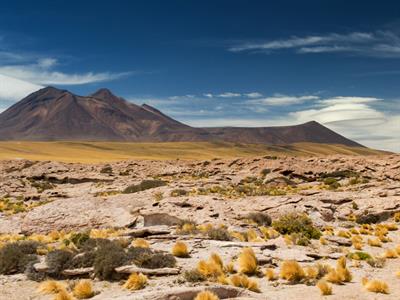
PUMPA - SMART LEARNING
எங்கள் ஆசிரியர்களுடன் 1-ஆன்-1 ஆலோசனை நேரத்தைப் பெறுங்கள். டாப்பர் ஆவதற்கு நாங்கள் பயிற்சி அளிப்போம்
Book Free DemoEastern Highlands
Eastern Highlands are considerably older than the Andes and are mainly plateau which is dissected by many rivers. They lie to the north and south of the Amazon River.
South America has two principal highland areas outside the Andes:
South America has two principal highland areas outside the Andes:
1. The Brazilian Highlands and
2. The Guiana Highlands
The Brazilian Highlands:
Located south of the Amazon river in Brazil, the Brazilian Highlands are made up of low mountains and plateaus that rise to an average elevation of \(1,006\) meters (\(3,300\) feet). They are gently rolling plateaus with steep cliffs along the east coast.
Located south of the Amazon river in Brazil, the Brazilian Highlands are made up of low mountains and plateaus that rise to an average elevation of \(1,006\) meters (\(3,300\) feet). They are gently rolling plateaus with steep cliffs along the east coast.
The Guiana Highlands:
The Guiana Highlands are located between the Amazon and Orinoco rivers. It has many waterfalls, including the Angel Falls.
The Guiana Highlands are located between the Amazon and Orinoco rivers. It has many waterfalls, including the Angel Falls.
The heavily forested plateau of the Guiana Highlands covers southern Venezuela, French Guiana, Guyana, northern Brazil, and a portion of southeastern Colombia.
Climate of South America
South America has a wide variety of climates ranging from northern Chile's dry desert conditions to the heavy rains along the continent's windswept southwestern coast. Steamy hot weather characterises the tropical rain forest of the Amazon basin. Freezing cold air surrounds the lofty, snow-capped Andean peaks.

Atacama Desert - Chile
In general, most of the continent has warm weather around the year. Only in the high Andes, it is always cold. The climate of South America has been closely influenced by the latitudes, attitudes and the proximity of the Pacific and Atlantic Oceans.
The Amazon basin is hot as the equator passes through it. In contrast, Quito, located almost on the same latitude on the Andes, has “Eternal Spring,” i.e. it has a pleasant climate throughout the year because of its high altitude (\(9,350\) feet or \(2849.88\) meters) above the sea level.
The rainfall distribution is mainly controlled by the physical features and the distance from the sea. The trade winds bring much rain to the east coast and the Westerlies to the west coast.
However, the Amazon basin gets rainfall every day because of its equatorial location. The regions around the Equator get what is called “4’o Clock Rains” which are convectional rains. Rainfall decreases towards the interior.
4 O'clock rain:
In equatorial regions, convectional rain occurs almost daily in the afternoons. It generally occurs at \(4\) pm, that’s why it is known as \(4\)’o Clock Rain.